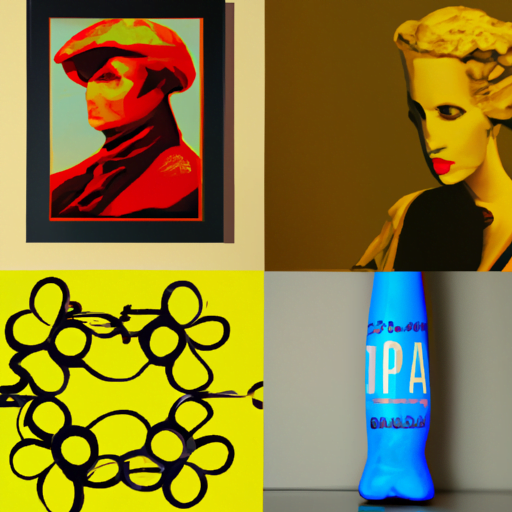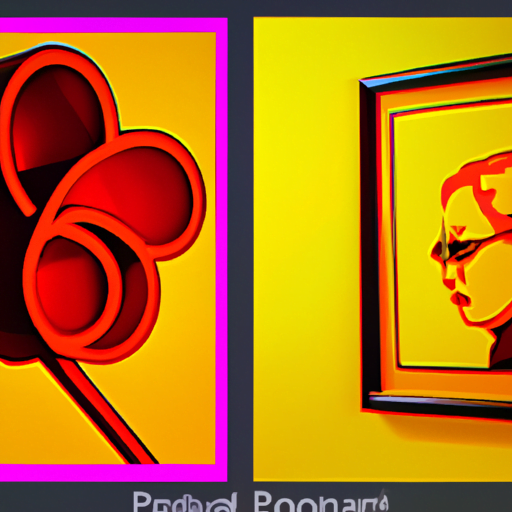
-
Table of Contents
The Intersection of Art Nouveau and Modern Design

Art Nouveau and Modern Design are two influential movements in the world of art and design. While they emerged in different time periods and have distinct characteristics, there is an undeniable intersection between the two. This article explores the relationship between Art Nouveau and Modern Design, highlighting their similarities, differences, and the impact they have had on each other.
1. Understanding Art Nouveau
Art Nouveau, which means “new art” in French, was a movement that emerged in the late 19th century and reached its peak in the early 20th century. It was a reaction against the academic art of the time and sought to break away from traditional forms and styles.
Key characteristics of Art Nouveau include:
- Organic and flowing lines inspired by nature
- Use of curved and asymmetrical forms
- Emphasis on decorative elements
- Incorporation of natural motifs such as flowers, plants, and animals
- Integration of different art forms, including architecture, furniture, and decorative arts
Art Nouveau was a highly decorative style that aimed to create a total work of art, where every element of a design was harmoniously integrated. It was influenced by various artistic movements, including the Arts and Crafts movement, Japonism, and Symbolism.
2. The Emergence of Modern Design
Modern Design, also known as Modernism, emerged in the early 20th century as a response to the rapid industrialization and technological advancements of the time. It rejected the ornate and decorative styles of the past and embraced simplicity, functionality, and the use of new materials.
Key characteristics of Modern Design include:
- Clean lines and geometric shapes
- Minimal ornamentation
- Focus on functionality and practicality
- Use of industrial materials such as steel, glass, and concrete
- Emphasis on mass production and affordability
Modern Design was influenced by various movements, including the Bauhaus, De Stijl, and the International Style. It aimed to create designs that were accessible to the masses and reflected the spirit of the modern age.
3. The Influence of Art Nouveau on Modern Design
Despite their differences, Art Nouveau had a significant influence on the development of Modern Design. The organic and flowing lines of Art Nouveau can be seen in the curved forms of modern furniture and architecture. The emphasis on decorative elements in Art Nouveau also influenced the use of ornamentation in modern design, albeit in a more restrained and minimalistic way.
One example of the influence of Art Nouveau on Modern Design is the work of renowned architect Antoni Gaudí. Gaudí’s masterpiece, the Sagrada Família in Barcelona, combines elements of Art Nouveau with innovative structural techniques. The organic forms and intricate details of the building reflect the influence of Art Nouveau, while the use of new materials and construction methods align with the principles of Modern Design.
Another example is the furniture designs of Charles Rennie Mackintosh. Mackintosh, a Scottish architect and designer, incorporated Art Nouveau motifs into his furniture designs, but simplified them and emphasized functionality. His iconic high-backed chair, known as the “Mackintosh chair,” features elegant curves and decorative details inspired by Art Nouveau, but its clean lines and practical design align with the principles of Modern Design.
4. The Impact of Modern Design on Art Nouveau
While Art Nouveau influenced Modern Design, the latter also had an impact on the former. The emphasis on functionality and practicality in Modern Design challenged the purely decorative nature of Art Nouveau. As a result, Art Nouveau gradually evolved into a more streamlined and simplified style.
One example of this evolution is the work of French designer René Lalique. Lalique, known for his exquisite glasswork, started his career creating intricate Art Nouveau jewelry. However, he later embraced the principles of Modern Design and began creating simpler and more geometric designs. His transition from Art Nouveau to Modern Design reflects the changing aesthetic preferences of the time.
5. The Enduring Legacy
Art Nouveau and Modern Design have left a lasting impact on the world of art and design. Their influence can be seen in various contemporary designs and movements.
For example, the organic and flowing lines of Art Nouveau can be seen in the work of contemporary architects such as Frank Gehry and Zaha Hadid. Their buildings feature curvilinear forms that echo the spirit of Art Nouveau, albeit with a modern twist.
Similarly, the principles of Modern Design continue to shape contemporary design practices. The focus on functionality, simplicity, and the use of new materials can be seen in the designs of companies like Apple, whose products embody the spirit of Modern Design.
6. Conclusion
The intersection of Art Nouveau and Modern Design is a fascinating subject that highlights the dynamic nature of art and design movements. While they emerged in different time periods and have distinct characteristics, Art Nouveau and Modern Design have influenced each other in significant ways.
Art Nouveau’s emphasis on organic forms and decorative elements laid the foundation for the development of Modern Design. The principles of Modern Design, on the other hand, challenged the purely decorative nature of Art Nouveau and pushed it towards a more streamlined and simplified style.
Today, the legacy of Art Nouveau and Modern Design can be seen in contemporary designs and movements. Their influence continues to shape the world of art and design, reminding us of the enduring power of these two influential movements.
